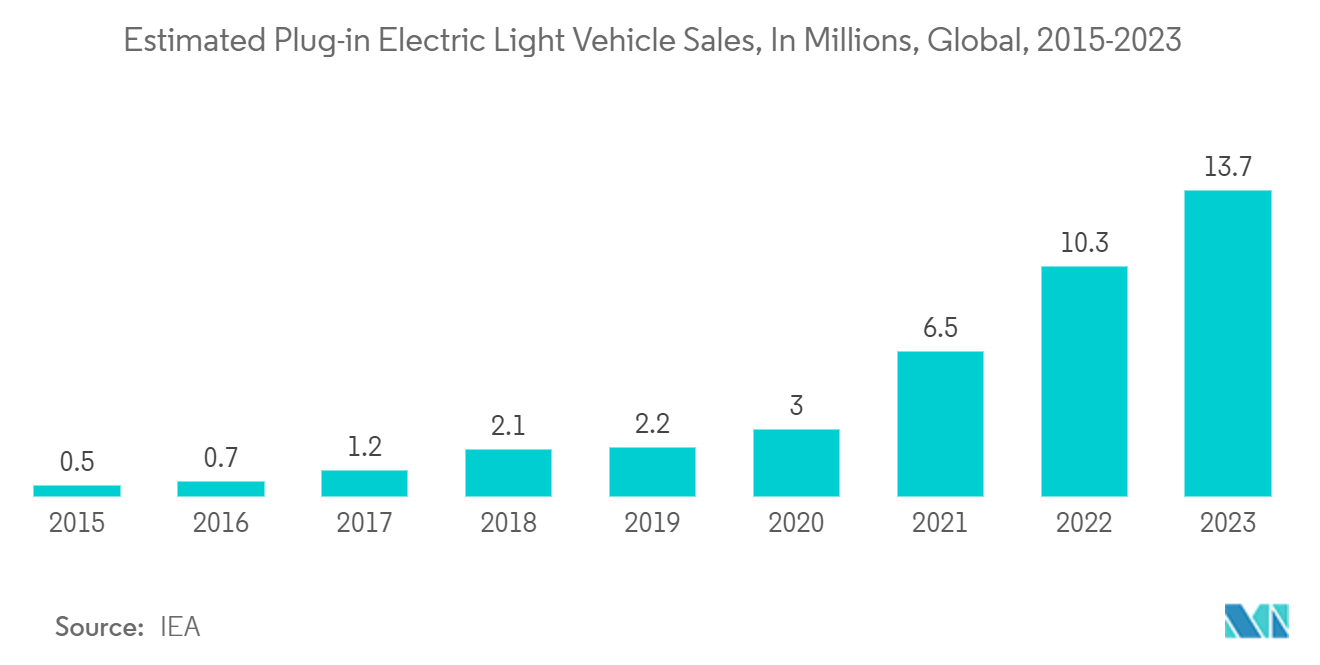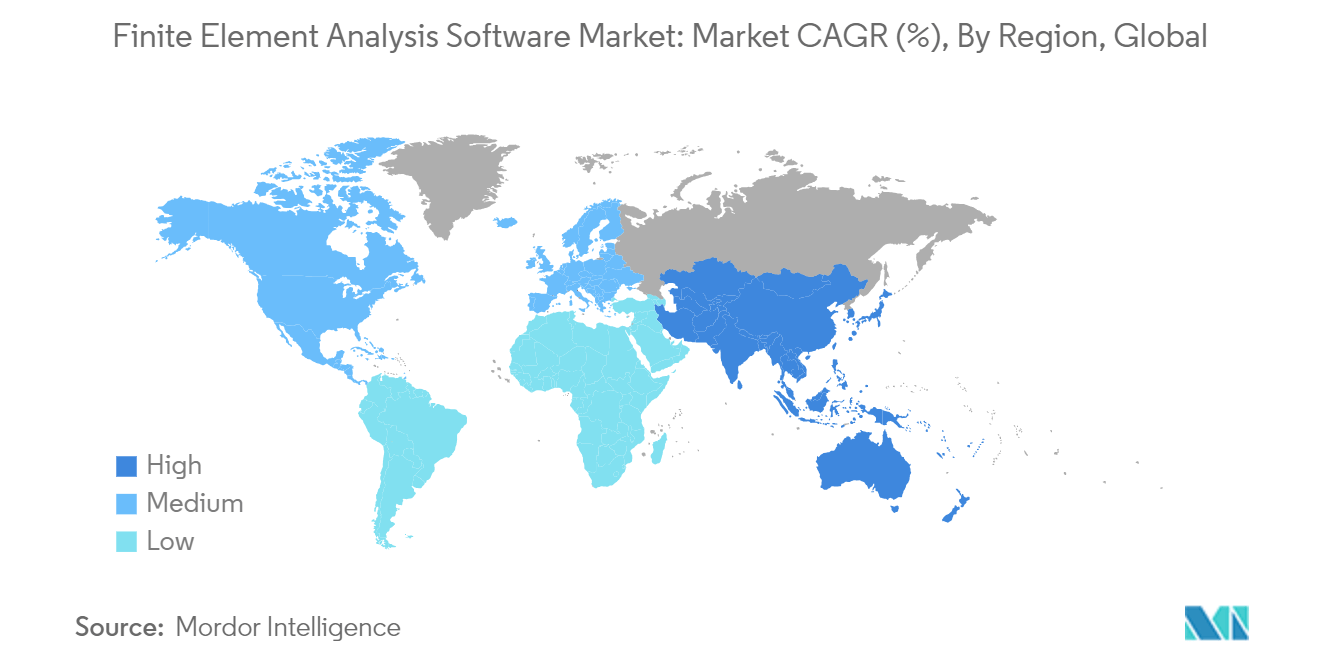Market Trends of Finite Element Analysis Software Industry
Automotive Application Segment Holds Significant Market Share
- The surge in the automotive sector is likely to boost the growth of the market studied. For instance, according to the China Passenger Car Association, annual sales of new energy passenger vehicles in China are projected to rise from 3.69 million units in 2021 to 7.8 million units by 2028. The German Association of the Automotive Industry (VDA) highlights that Germany boasts one of the world's largest automobile industries. In 2022, Germany's passenger car sales reached approximately 2.65 million units, marking a modest increase from 2.62 million units in 2021. Such growth in sales drives the adoption of fine element analysis software.
- Safety remains a top priority in automotive engineering, with stringent regulations imposed by regulatory bodies worldwide. According to the report published by WHO in December 2023, approximately 1.19 million people die each year because of road traffic crashes. Road traffic crashes cost most countries 3% of their gross domestic product.
- Hence, to prevent such road accidents, automotive companies use FEA software, which plays a crucial role in ensuring that vehicles meet these safety standards. By simulating crash tests, impact forces, and other safety-related scenarios, FEA enables engineers to evaluate and enhance the structural integrity of vehicle components. This virtual testing helps identify potential weaknesses and optimize designs to improve crashworthiness and passenger protection.
- Several government initiatives towards sustainable mobility coupled with growing investments in e-mobility startups will drive the demand and production of electric vehicles, supporting the growth of the global finite element analysis software market over the forecast period. For instance, the International Energy Association (IEA) estimated that 2023 saw plug-in electric light vehicle (PEV) sales of around 13.7 million units.
- In conclusion, the rising demand for finite element analysis software in the automotive sector reflects its growing importance in addressing the challenges of modern vehicle design and development. FEA software provides valuable insights that enhance safety, optimize performance, and accelerate product development while reducing costs. As the automotive industry continues to evolve and embrace new technologies, the role of FEA in driving innovation and efficiency will become even more crucial.

North America is Expected to Hold Significant Market Share
- The US finite element analysis (FEA) software market is witnessing robust growth fueled by technological advancements and heightened demand across diverse industries. FEA software plays a crucial role in simulating and analyzing intricate engineering challenges, facilitating the optimization of designs and processes.
- There is a growing trend toward the adoption of cloud-based FEA solutions, which provide scalability, flexibility, and cost-effectiveness. With cloud FEA software, users can conduct high-computation simulations without investing in costly on-premises hardware, broadening accessibility to a wider array of companies, including small and medium-sized enterprises (SMEs).
- For instance, in November 2023, Ansys, in partnership with TSMC and Microsoft, validated a solution aimed at analyzing mechanical stresses in multi-die 3D-IC systems. These systems are produced using TSMC's advanced packaging technologies, known as 3DFabric. This joint solution enhances customer confidence in tackling new multiphysics challenges, thereby bolstering the functional reliability of designs leveraging TSMC's 3DFabric suite. Ansys Mechanical, the premier finite element analysis software, adeptly simulates mechanical stresses in 3D-ICs, particularly those induced by thermal gradients. Furthermore, this solution has demonstrated its efficiency on Microsoft Azure, ensuring swift turn-around times for intricate 2.5D/3D-IC systems.
- Integrating artificial intelligence (AI) and machine learning (ML) with finite element analysis (FEA) software significantly boosts its efficiency in managing intricate simulations. These advancements enable automated mesh generation, optimization, and predictive analytics, rendering FEA software both robust and user-friendly.
- In Canada, the market for finite element analysis (FEA) software is witnessing consistent growth, fueled by the rising embrace of sophisticated engineering solutions across diverse sectors. FEA software is pivotal in product and system design, simulation, and analysis, empowering engineers to enhance performance, cut costs, and bolster safety.
- Canada's energy sector, encompassing both oil and gas and renewable energy, utilizes FEA software to design and analyze intricate structures, including pipelines, wind turbines, and offshore platforms. The push for efficient and safe energy production and distribution systems drives the growing adoption of FEA solutions. Canada is making significant investments in its oil and gas infrastructure. A prime example is The Canadian Prosperity Project, currently in the announced stage, which is set to commence operations in 2030, with an estimated cost of CAD 24 billion (approximately USD 17.78 billion). This project will oversee the operation of the 4,500 km-long Canadian Prosperity Pipeline.


